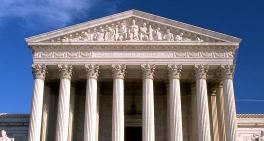Recent Updates
-
U.S. Bankruptcy Courts V
United States Courts 04/30/2017Bankruptcy is not the only legal status that an insolvent person may have, and the term bankruptcy is therefore not a synonym for insolvency. In some countries, such as the United Kingdom, bankruptcy is limited to individuals, and other forms of inso...
-
U.S. Bankruptcy Courts IV
United States Courts 04/30/2017Bankruptcy courts appoint a trustee to represent the interests of the creditors and administer the cases. The U.S. Trustee[3] appoints Chapter 7 trustees for a renewable period of 1 year, Chapter 13 trustees are “standing trustees” who ad...
-
U.S. Bankruptcy Courts III
United States Courts 04/30/2017United States bankruptcy courts are courts created under Article I of the United States Constitution.[1] The current system of bankruptcy courts was created by United States Congress in 1978, effective April 1, 1984.[2] United States bankruptcy court...
-
U.S. Bankruptcy Courts II
United States Courts 04/30/2017Filing bankruptcy can help a person by discarding debt or making a plan to repay debts. A bankruptcy case normally begins when the debtor files a petition with the bankruptcy court. A petition may be filed by an individual, by spouses together, or by...
-
U.S. Bankruptcy Courts I
United States Courts 04/30/2017Bankruptcy helps people who can no longer pay their debts get a fresh start by liquidating assets to pay their debts or by creating a repayment plan. Bankruptcy laws also protect financially troubled businesses. This section explains the bankruptcy p...




